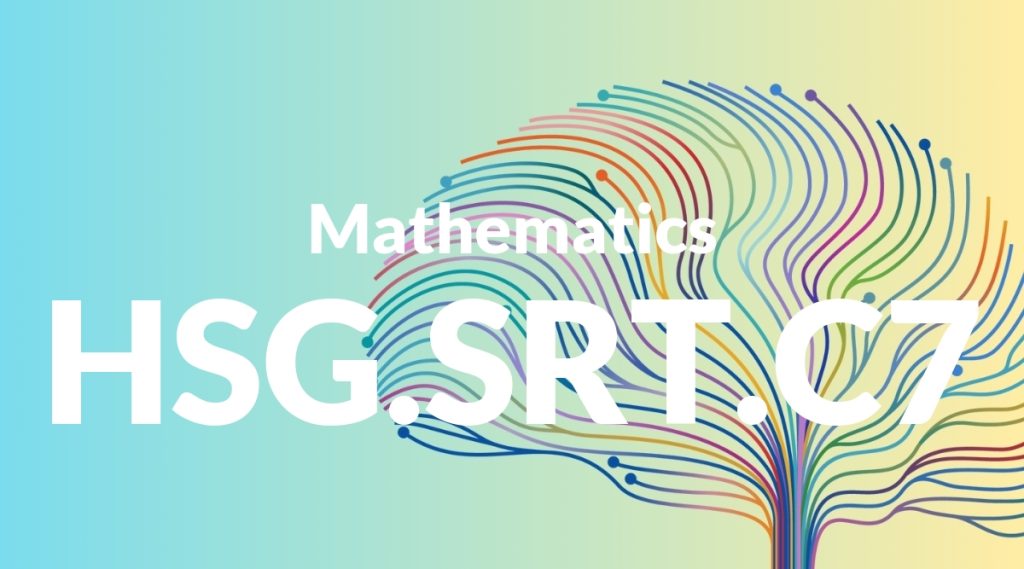Standard: HSG.SRT.C7 – Explain and use the relationship between the sine and cosine of complementary angles.
Grade level: High School: Geometry
Subject: Mathematics
Domain: Similarity, Right Triangles, & Trigonometry
Teacher Overview
This standard focuses on understanding and using the relationship between the sine and cosine of complementary angles. It is crucial because it lays the foundation for more advanced trigonometric concepts and applications in various fields such as physics, engineering, and computer science. Students need to understand basic trigonometric functions, the Pythagorean theorem, and the concept of complementary angles.
Mastering this standard will prepare students for more complex trigonometric problems and real-world applications involving non-right triangles, wave functions, and harmonic motion.
Common Misconception 1
A common misconception is that the sine and cosine of complementary angles are unrelated. This is incorrect because the sine of one angle is equal to the cosine of its complement.
Intervention 1
To address this misconception, use visual aids and interactive tools to demonstrate how changing one angle affects its complement and their respective sine and cosine values.
Common Misconception 2
Another misconception is confusing ‘complementary’ with ‘supplementary’ angles. Complementary angles add up to 90 degrees, while supplementary angles add up to 180 degrees.
Intervention 2
Provide clear definitions and examples of complementary and supplementary angles, and use visual aids to emphasize their differences.
Prerequisite Knowledge
Students should have a good understanding of basic trigonometric functions, the Pythagorean theorem, and the concept of complementary angles.
Subsequent Knowledge
Students will develop skills in solving more complex trigonometric problems, including those involving non-right triangles and real-world applications such as wave functions and harmonic motion.
Instructional Activities
- Use interactive geometry software to explore the relationship between sine and cosine of complementary angles.
- Create real-world problem-solving scenarios that require the use of sine and cosine relationships.
- Conduct hands-on activities measuring angles and calculating their sine and cosine values.




